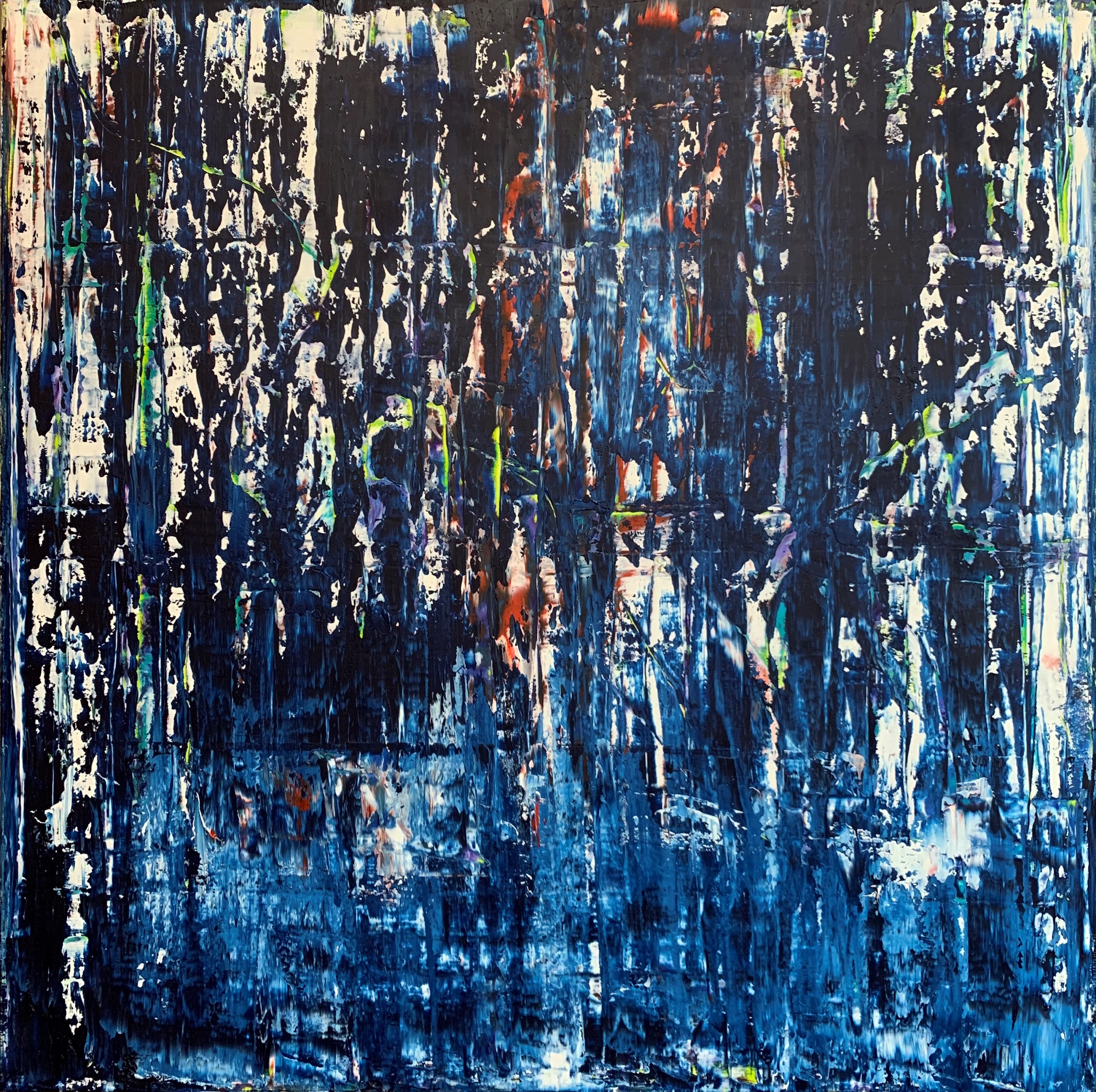Organized Chaos: An Interview with Kevin Sytsma
Kevin Sytsma describes his artistic process as “organized chaos.”
Sytsma grew up in Iowa and spent seven years in the military, serving in both Afghanistan and Iraq. After coming home and transitioning out of the military, he said a friend invited him to a paint night event. He said he’d never done much with art until attending that class, about a year and a half ago—and that was the start of a whole new world for him.
“I just kind of got hooked,” he said. “I fell in headfirst and went crazy.”
Since then, Sytsma has continued making art, and has gotten involved with arts organization such as the After Action Network’s art programs, which helped him continue making and sharing his art. He said the After Action programs are valuable for veterans trying to explore new activities, skills, and ways of coping and expressing themselves.
“I think it’s just opening up their minds and kind of exploring the possibilities,” he said.
Eventually, he started creating layered style paintings, a style he said he just sort of fell into.
“I didn’t really know I was copying but Gearhart, the German style painter, I kind of got hooked on his layering technique,” he said.
Lately, he said he works on larger canvases that are about nine feet long. “I like that emotional connection to painting and just stuck my hands in oil paint,” he said, describing the process as “kind of an outlet (that) relieves a lot of stress.”
He said he generally uses a generic color palette for his work and then uses large sheets of plexiglass to smear the paint on the canvas. Between each layer, he said he takes a step back to look at the painting, figure out what to add or remove.
“It’s more of a spontaneous process rather than strategic planning,” he said. Often, this process will take him 5-6 months before it feels finished.
He said learning to embrace the spontaneity of art has been important for him, since in both his military career and current government jobs, he’s always had to be very structured.
“There’s little room for gray areas,” he explained. “Whereas painting is the complete opposite.” He said that he doesn’t consider himself a very emotionally open person, but that art has helped him explore and express himself more, without the constraints of the other more rigid or structured parts of his life.
With the start of the COVID-19 pandemic, Sytsma said he felt even his very open creative process start to stagnate—and he decided to make a change. He switched from using plexiglass to spread the paint to using his fingers, arms, and hands to spread it.
“I was getting a little stagnant or stale, and decided to just kind of start from scratch,” he said. He calls these new paintings “living paintings,” because “they actually have my DNA in them.”
You can learn more about Sytsma’s art on his website or via Instagram.




